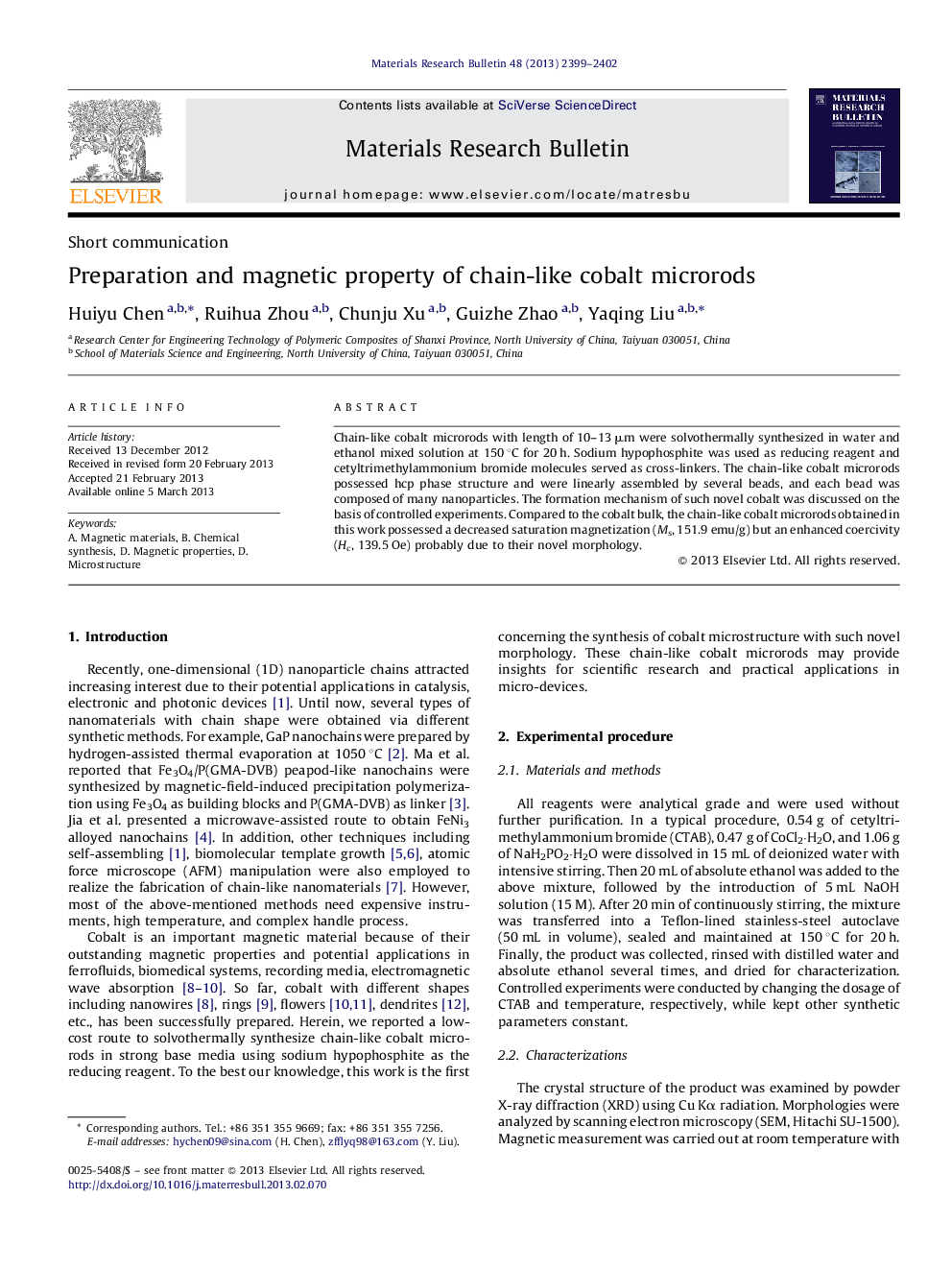| کد مقاله | کد نشریه | سال انتشار | مقاله انگلیسی | نسخه تمام متن |
|---|---|---|---|---|
| 1488743 | 992294 | 2013 | 4 صفحه PDF | دانلود رایگان |

Chain-like cobalt microrods with length of 10–13 μm were solvothermally synthesized in water and ethanol mixed solution at 150 °C for 20 h. Sodium hypophosphite was used as reducing reagent and cetyltrimethylammonium bromide molecules served as cross-linkers. The chain-like cobalt microrods possessed hcp phase structure and were linearly assembled by several beads, and each bead was composed of many nanoparticles. The formation mechanism of such novel cobalt was discussed on the basis of controlled experiments. Compared to the cobalt bulk, the chain-like cobalt microrods obtained in this work possessed a decreased saturation magnetization (Ms, 151.9 emu/g) but an enhanced coercivity (Hc, 139.5 Oe) probably due to their novel morphology.
Chain-like cobalt microrods were solvothermally synthesized at 150 °C in strong base media with the assistance of CTAB molecules as the cross-linkers, and such chain-like cobalt microrods possessed a decreased saturation magnetization of 151.9 emu/g but an enhanced coercivity of 139.5 Oe compared to cobalt bulk.Figure optionsDownload as PowerPoint slideHighlights
► Chain-like Co microrods were solvothermally prepared in water and ethanol solution.
► The microrods were assembled by linear beads consisted of many smaller nanoparticles.
► CTAB molecules acted as cross-linkers.
► They possessed a saturation magnetization of 151.9 emu/g and coercivity of 139.5 Oe.
Journal: Materials Research Bulletin - Volume 48, Issue 6, June 2013, Pages 2399–2402